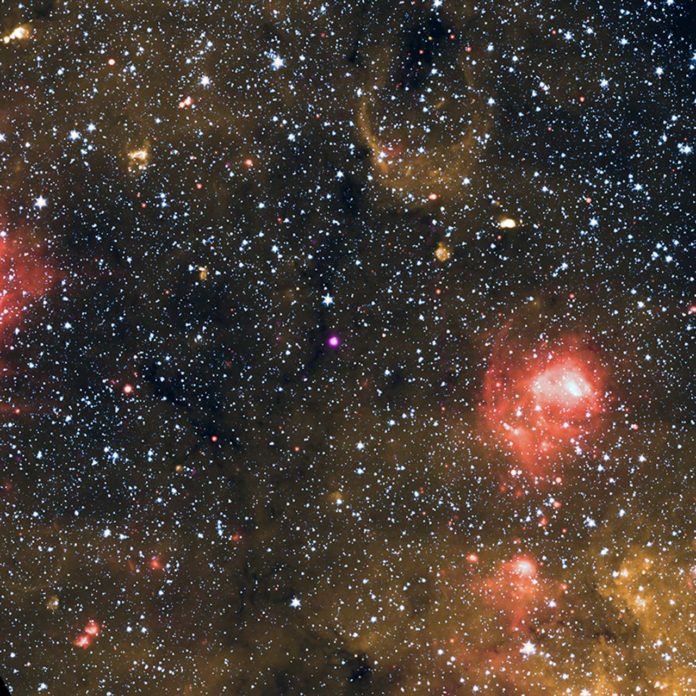On March 12, 2020, astronomers detected a new magnetar with NASA’s Neil Gehrels Swift Telescope. This is only the 31st known magnetar out of the approximately 3,000 known neutron stars.
The magnetar called J1818.0-1607 is the youngest known magnetar, with age estimated to be about 500 years old.
Recent observations made by NASA’s Chandra X-ray Observatory suggest that the magnetar J1818.0-1607 is also a pulsar, meaning it emits regular pulses of light. The observations also gave astronomers the first high-resolution view of this object in X-rays.
Besides, the data revealed a point source where the magnetar was located, which is surrounded by diffuse X-ray emission, likely caused by X-rays reflecting off dust located in its vicinity.
This composite image contains a wide field of view in the infrared from two NASA missions, the Spitzer Space Telescope and the Wide-Field Infrared Survey Explorer (WISE), taken before the magnetar’s discovery. X-rays from Chandra show the magnetar in purple. The magnetar is located close to the plane of the Milky Way galaxy at a distance of about 21,000 light-years from Earth.
Other astronomers have also observed J1818.0-1607 with radio telescopes, such as the NSF’s Karl Jansky Very Large Array (VLA). They found that the magnetar emits radio waves as well. It means it has properties similar to that of a typical “rotation-powered pulsar.
Until now, only five magnetars, including this one, are found to act like pulsars, constituting less than 0.2% of the known neutron star population.
The Chandra observations may also provide support for this general idea. Safi-Harb and Blumer studied how efficiently J1818.0-1607 is converting energy from its decreasing rate of a spin into X-rays. They concluded this efficiency is lower than that typically found for magnetars and likely within the range found for other rotation-powered pulsars.
According to astronomers, the supernova that created this magnetar must have been left behind a detectable debris field.
To search for this supernova remnant, Safi-Harb and Blumer looked at the X-rays from Chandra, infrared data from Spitzer, and the radio data from the VLA. Based on the Spitzer and VLA data, they found possible evidence for a remnant, but at a relatively large distance away from the magnetar.
Journal Reference:
- Harsha Blumer et al. Chandra observations of the newly discovered magnetar Swift J1818.0-1607. DOI: 10.3847/2041-8213/abc6a2
